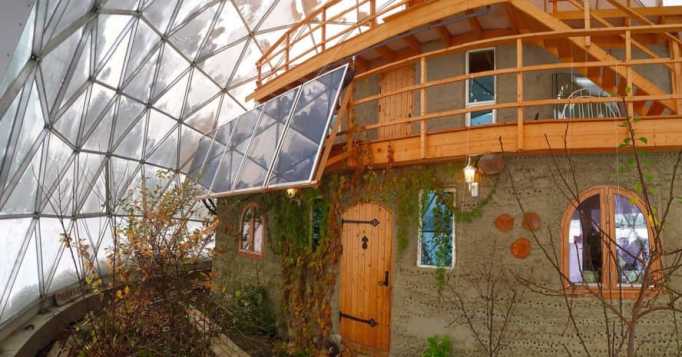In the 1940s, a US inventor called Richard Buckminster Fuller sought to rethink the notion of shelter or house, or what is known as a geodesic dome dwelling. He spent the most of his time at work searching for methods to make life more sustainable and easy. His work is described by the American Institute of Architects as “the strongest, lightest, and most effective technique of enclosing space known to man.”
Richard Buckminster Fuller made a significant contribution to the convenience of the US Marine Corps by designing domes that could be transported by helicopter. This aided them in covering their turfs as well as storing them. Throughout his career, he championed the idea of a geodesic dome dwelling, and his principles are still being used today. The geodesic dome can cover more area than any other enclosure without the need of internal supports…

The greater the size, the lighter and stronger it is in proportion. This design represents a milestone in the shelter industry, not only in terms of cost-effectiveness, but also in terms of simplicity of construction and energy efficiency. The shape provides for optimal air circulation with minimum energy input. In truth, the Hjerteflgers have been living within a geodesic dome house near the Arctic Circle, precisely on Sandhornya island in Norway.
Their home was designed to withstand all of the terrible weather conditions that come with living in the Arctic, making it a sustainable place to live. Their three-story cob house is wrapped in an aesthetically appealing and useful Solardome solar geodesic dome made of sand, water, clay, and other organic components The Hjerteflgers were sheltered from large snow loads and severe winds by the 25-foot-high dome that enclosed their house. The dome’s presence also aided in lowering heating costs.

Because the dome is big enough to cover a garden area, the space will generate more greenhouse gases in order to grow food without sunshine. They cultivate tomatoes, cucumbers, herbs, melons, squash, and many other things. “We adore the home; it has its own spirit and seems extremely special to us.” “What impresses us is that we rebuilt ourselves while building the home,” Ingrid Hjerteflger told Inhabitat.

“The process moulded us, altered us… The atmosphere is one-of-a-kind. The home seems serene; I can almost sense the silence.” “It’s difficult to describe. But it would have been difficult to acquire this sense from a home designed and constructed by someone else, or from a structure with corners and straight lines.” The Hjerteflgers have shown to us, with the assistance of this ecological and efficient invention, that the notion of living does not have to be in a regular home in a typical suburban neighborhood.

With this form of technology, individuals may opt out of the conventions and live a tranquil life away from the noise and hustle and bustle. Would you accept the opportunity to live in a geodesic dome home? Take a virtual tour of this one-of-a-kind home:
